

I hate to say it, but over the course of my career, I've wasted a lot of money on my businesses.
The worst part? I thought I was spending the money wisely.
It goes back to my very first online business, a Monster knockoff called Advice Monkey.
When I started it, I was just a kid. I hadn't even gone to college yet.
I spent $5,000 just to build the site. But that wasn't the problem. The problem was that I poured tons of money into marketing firms.
I hired three different firms, and none of them did anything for me. I realized they were just taking advantage of me and my wallet.
That pushed me to learn Internet marketing on my own, and it was one of the best career moves I've ever made.
But that didn't mean I was perfect with money from then on.
Unfortunately, I was still wasting money left and right, even though I thought I was using it well.
I even lost a million dollars because of bad investments!
That's not an exaggeration! A million bucks — down the drain!
I hope you're not wasting millions, but you might be spending money on useless marketing tactics. I see it all the time, and it happens to almost every business at some point or another.
It might be happening to you right now, and you might not even realize it.
Here are six of the most common money wasters when it comes to marketing. Learn from my mistakes, so you don't have to lose money like I did.
1. Constant rebrandingBranding is super important to any good business.
Just check out some of the important features behind branding.

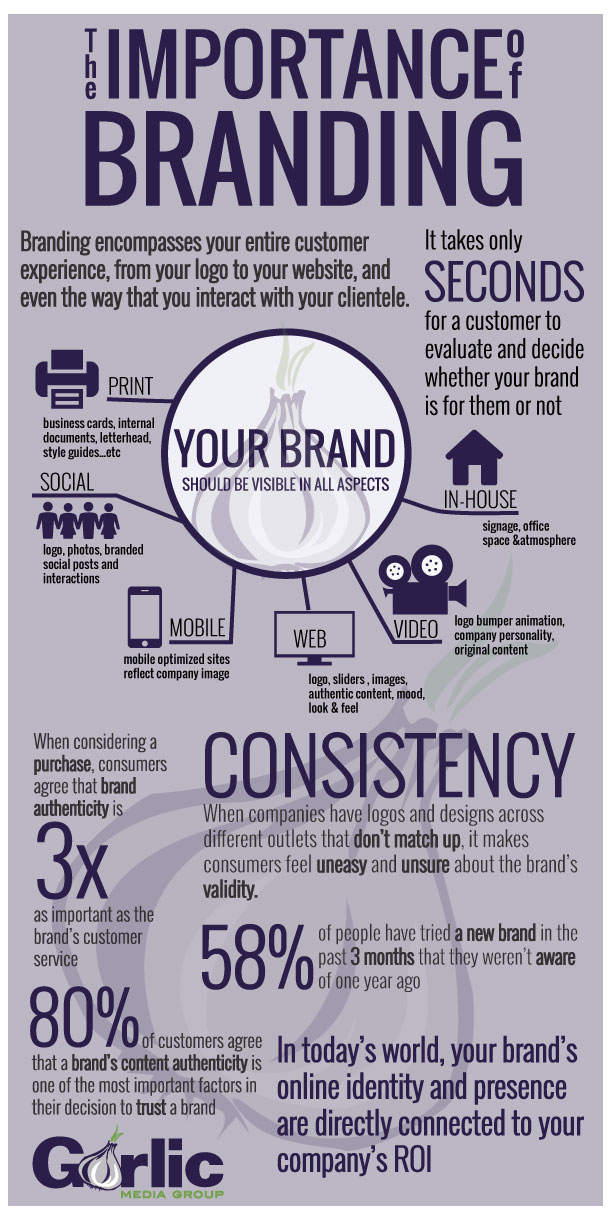
Every great company has a rock solid brand behind it, whether it's Google, Pepsi, or Walmart.
Your business is no different. You need an awesome brand to stand out from your competitors and get people to pay attention to you.
And sometimes, you'll need to rebrand your business.
Branding is an art, not a science. Sometimes you'll realize that your brand wasn't what you envisioned, and you'll have to rebrand.
But some businesses get downright obsessed with rebranding.
It's become something of a trend. Even big industry leaders like Google, the Huffington Post, and About.com are regularly rebranding.
Don't get me wrong. You can use rebranding as a strategic tool. But at some point, it's just too much.
The whole point of a brand is to present a consistent image of your business. It's about anchoring yourself to a specific term.
I explain more in this video:
That's branding in a nutshell.
So if you're rebranding all of the time, you run the risk of your users getting confused. The brand that you worked so hard to build could come tumbling down.
Marketing history is full of rebranding disasters, and they haven't stopped.
For example, when Tropicana changed its carton design in 2009, customers rioted.


People even called it ugly and stupid.
They were so used to the old design that it became an emotional attachment.
In other words, Tropicana's branding was so strong that its customers got upset when they just changed the design of a carton.
The truth is that rebranding is a big move. You shouldn't do it without first carefully evaluating all of the factors involved, and you definitely shouldn't do it all the time.
Rebrands are expensive. They usually cost tens of thousands of dollars, and often, they cost hundreds of thousands.
The costs add up quickly. Take a look.

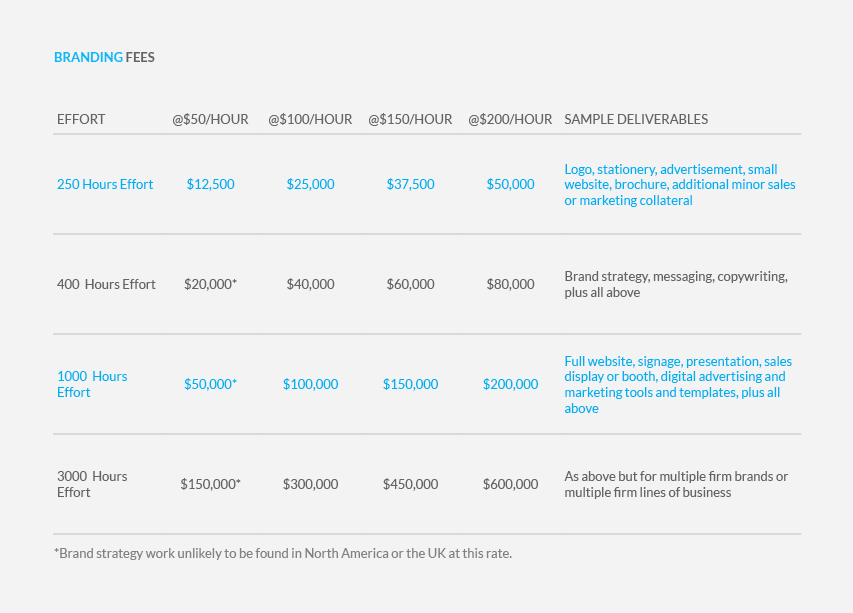
Constantly rebranding your business is a fantastic way to waste money.
You just don't need it.
Focus on building your existing brand and connecting your business to a specific term within a niche.
If you feel like you need to rebrand down the road, make absolutely sure it's worth the money.
Take a look at your entire brand and think about the consequences of rebranding. Weigh the pros and cons.
But first, try improving your brand. You might find that you can fix your problems instead of starting from scratch.
2. Bad content and copyBe honest. How much bad content or copy do you read each day?
Almost every day I come across content that makes me cringe. The sad truth is that bad content is everywhere.
But is your business guilty of publishing bad content?
It's time to find out.
You know that content is super important to any marketing strategy today.

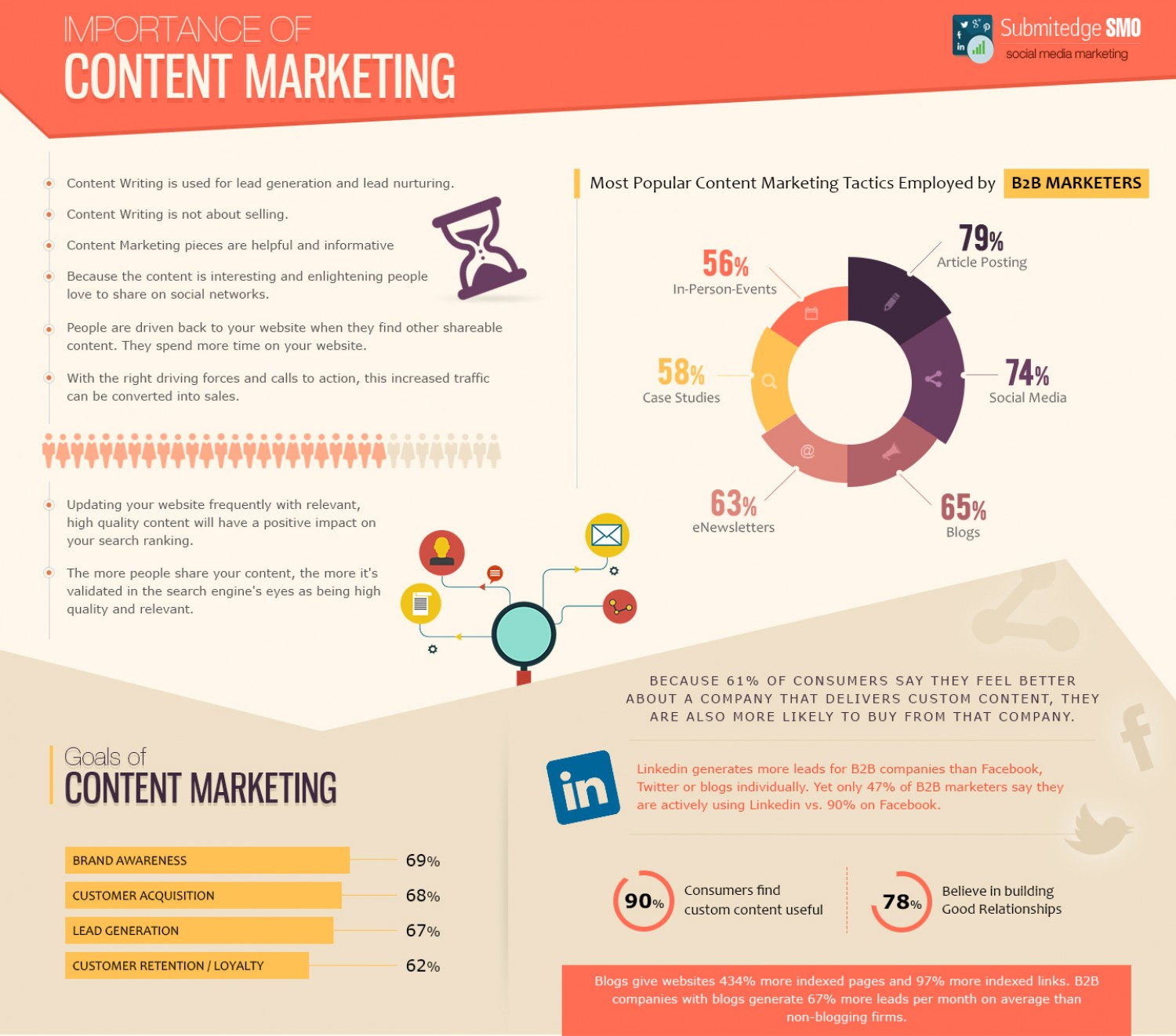
It's so important that I spend as much as $30,000 on huge guides.
I spend so much because I want the content to be amazing. I want my content to be better than anyone else's, and I'm willing to pay for that kind of quality.
Those guides are great for my brand, and they let people know I provide tons of value.
On the other hand, if you cheap out on content or website copy, your business will suffer.
Content is like clothing for your website. You're probably more likely to trust someone in nice-looking business attire than someone in an old T-shirt and worn-out jeans.
In the same way, people trust websites that have engaging content, and creating that kind of content requires work.

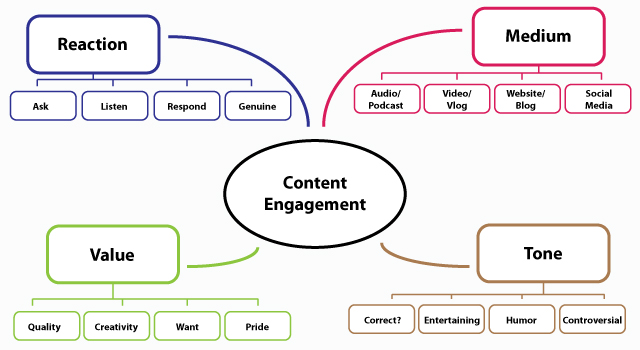
It also requires money, especially if you're not a copywriter by trade. You might need to outsource the work to ensure you have content that blows people away.
The problem, as I've repeated, is that way too many businesses waste money on bad copy.
I've seen too many startups hire a freelancer for a few bucks an hour and get awful copy in return.
I'm talking about generic landing pages, vague descriptions, and boring social posts. This kind of content never brings in good results.
But that's not the only reason most businesses have bad copy.
Often, it's because they don't know what their audience wants.
If you want your copy to shine, you have to know what your users want.
Take a look at the difference between these two snippets of copy:

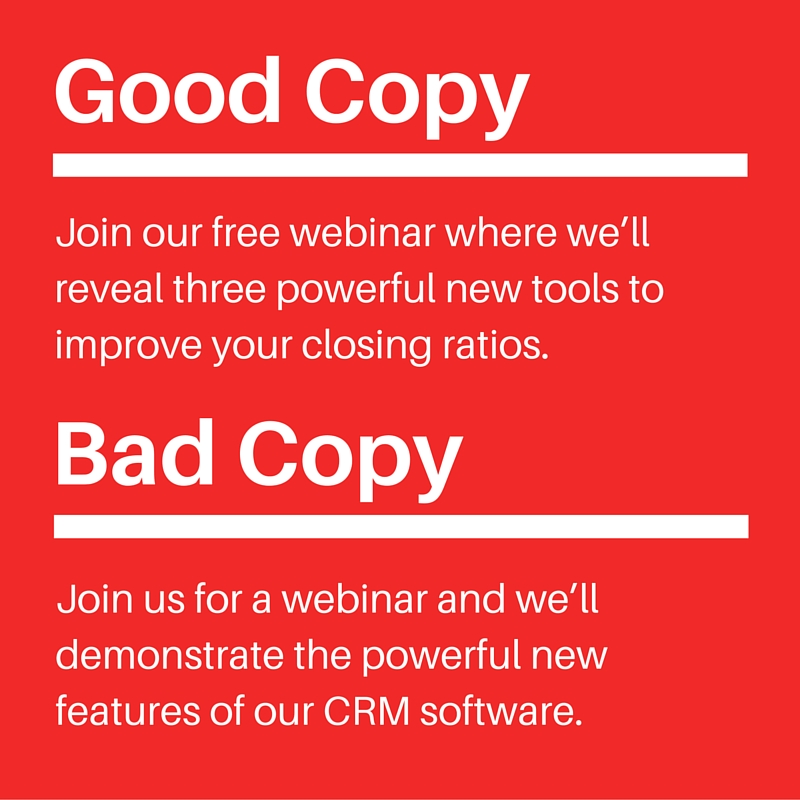
The bad copy provides a general overview of the product, but it's vague and doesn't connect with the readers.
This copy doesn't seem like it knows what its target audience wants.
On the other hand, the good copy speaks directly to a certain type of users who want something specific.
This isn't generic content. It's aimed at a very narrow group of people, but that's why it's so effective. It feels personal.
But if you're wasting money on bad copy, you won't give your users what they want.
Marketers spend quite a lot on content. On average, it's about 28% of their marketing budget!

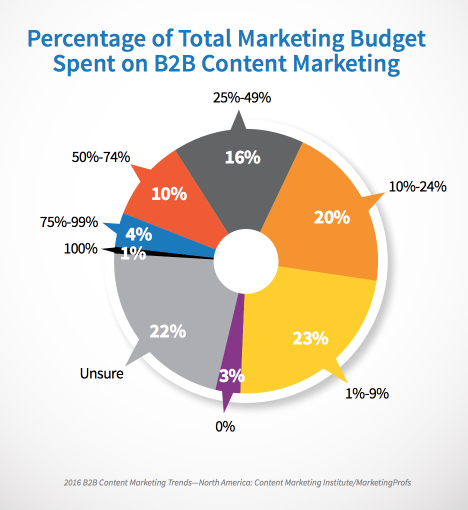
That's nearly as much as most marketers are spending on digital advertising.
You can't afford to spend money on bad content.
Remember, your content is a direct reflection of your brand. If you want your audience to think you're outstanding, then your content has to be outstanding.
3. Buying fake social media followersBuying fake followers seems like an easy and relatively cheap way to draw attention to your social media profiles.
But is it a good idea?
The idea of purchasing social media followers is almost as old as social media itself, and hundreds of thousands of companies around the world have started doing it.
It's so common that almost everyone is using it.
Even Barack Obama, Oprah, and Twitter itself are reported to have paid for fake followers.
Some major celebrities are suspected of having as many as 35% fake followers!

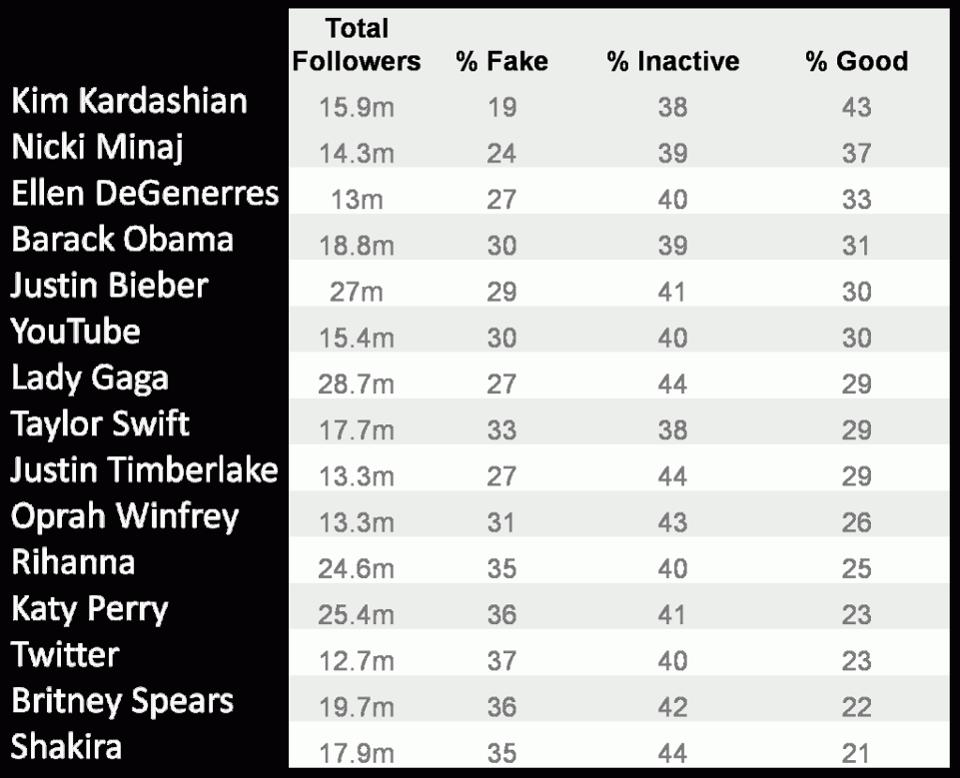
And you can buy millions of fake followers too.
You've probably seen sites like these that promise countless followers with a high retention rate, all for a good price.

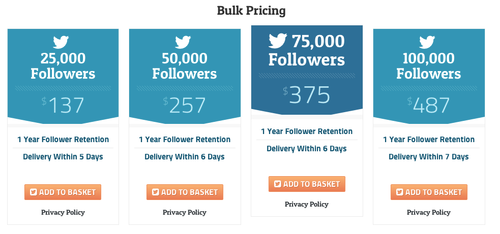
Facebook, Twitter, Instagram, Snapchat––there are services like this for every social media network you can think of.
It's not surprising, but buying fake followers is a bad idea. It's one of the worst ways to waste money on marketing.
Basically, you get little to no ROI from purchasing fake followers.
AdEspresso ran a super interesting experiment on fake followers.
They took an Instagram account, bought some fake followers, and compared the results of real followers versus fake followers.
As you might expect, the real human followers engaged with social content and bought products.
The fake followers? You guessed it––low engagement levels and no sales.
Check it out for yourself. Here are the like histories and sales results for the real followers:

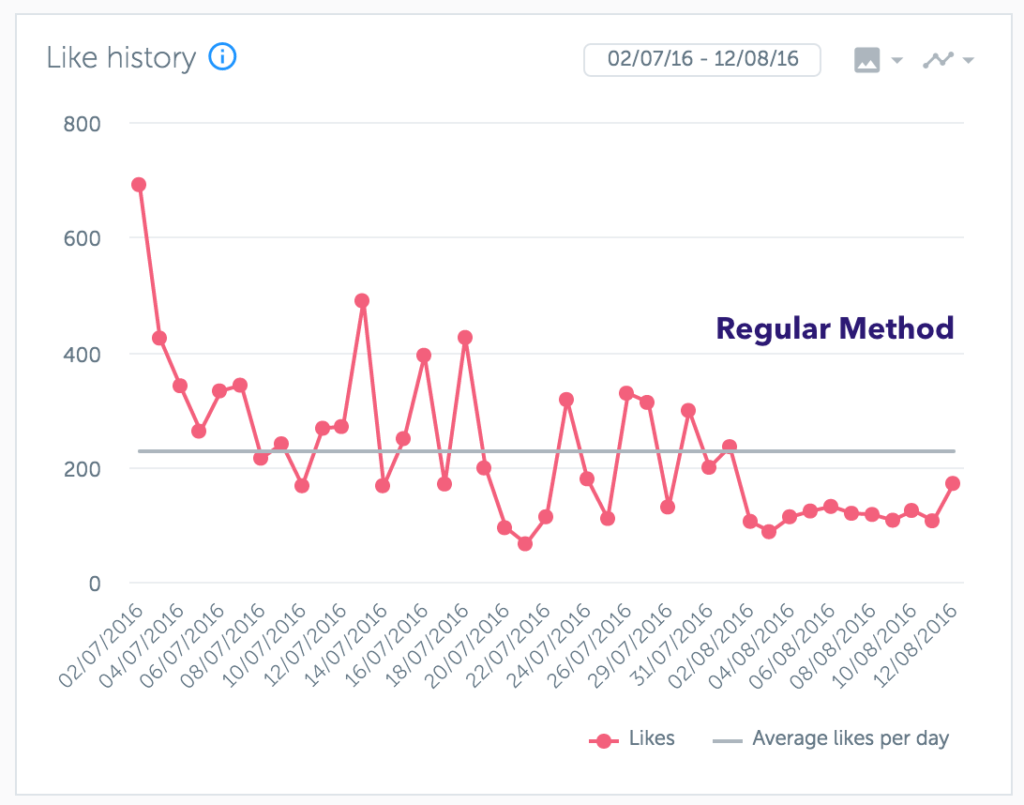

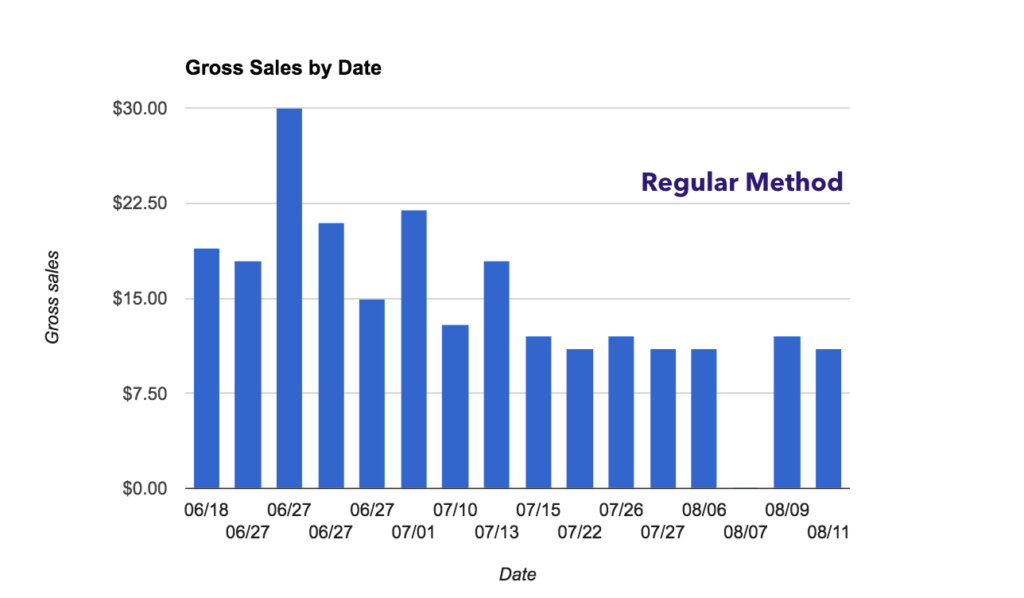
And here are those same stats for the fake followers:

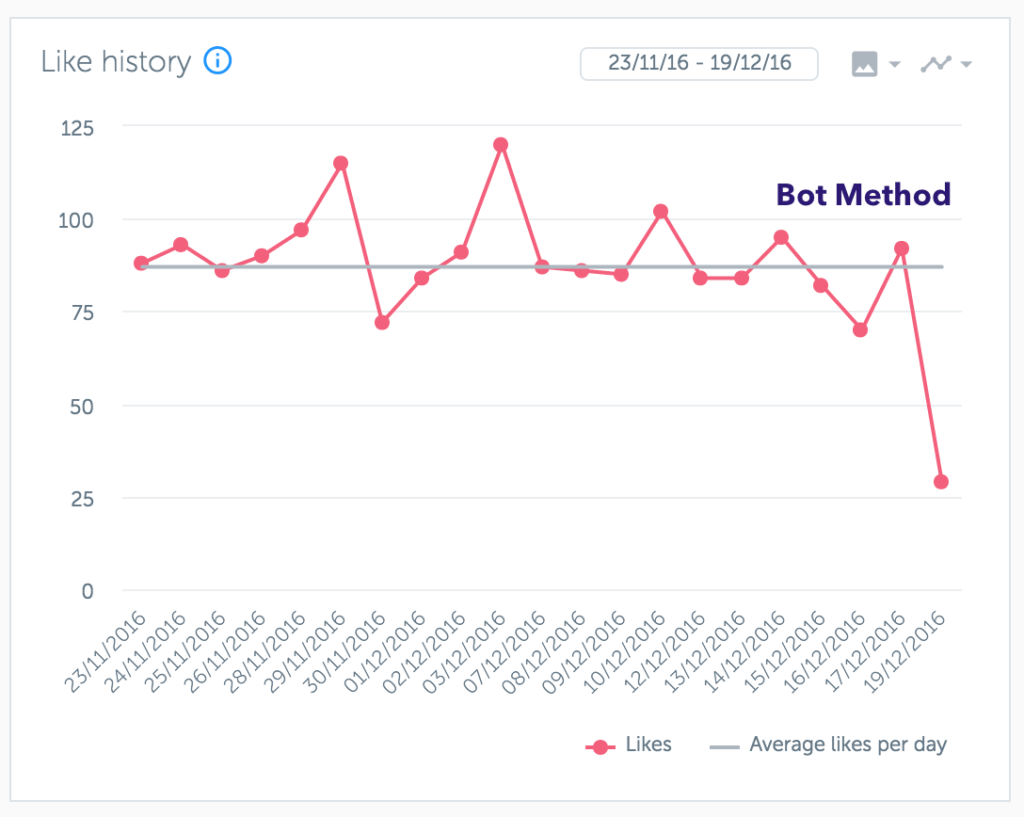

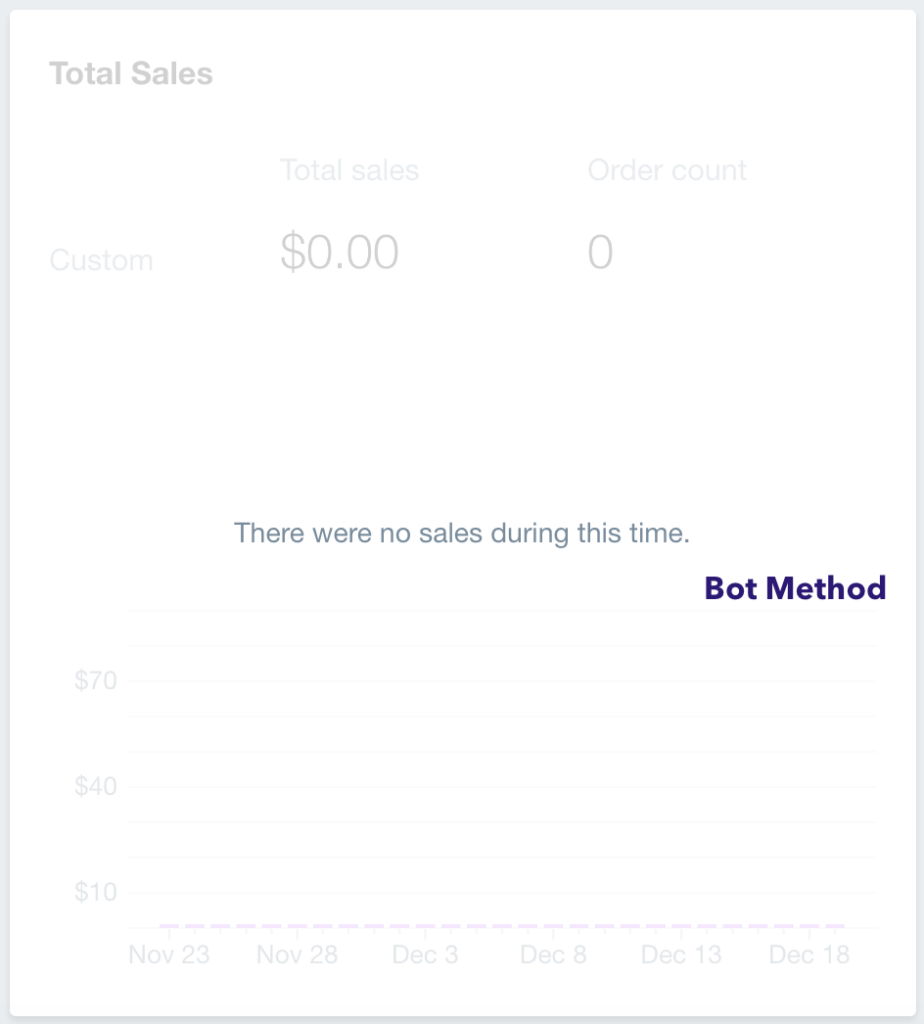
Do you need any more proof?
Real followers will always be better than fake ones.

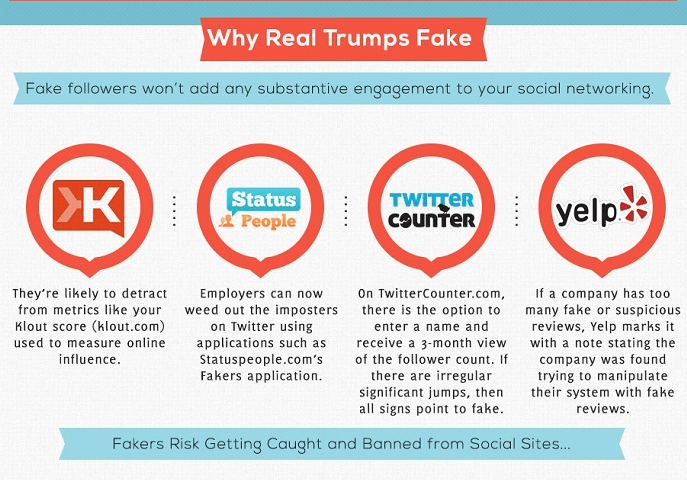
Buying fake followers feels good at first. You see a big number and get excited.
But in the end, they do nothing for you.
They can't convert because they're not real. And they won't engage with your social profiles well because they're often bots.
Oh, and did I mention that your number of social followers is a useless metric?
You might as well just throw your money directly into the trash can.
4. Spending big on display adsDisplay ads have a time and a place.
They have their benefits. They're easy to spot, and they can increase brand awareness.
However, display ads have a lot of negatives too.
For one, they typically have really low conversion rates.

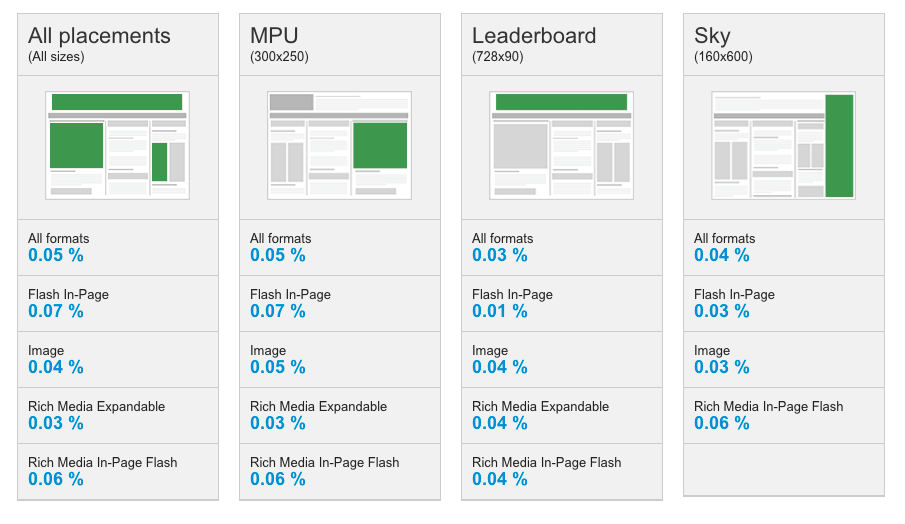
Take a close look at that chart. The highest conversion rate is only 0.07%!
Ouch.
That might be because most people don't even view display ads.
Only 35% of display ads get any views at all.
Right off the bat, that means that 65% of Internet visitors don't look at display ads.
But wait! It gets worse.
Of that 35%, only 9% of ads get more than a second of attention, and only 4% get more than two seconds of attention.
Despite these statistics, businesses keep spending more and more money on display ads.
In 2016, over 66 billion dollars was spent on display ads!

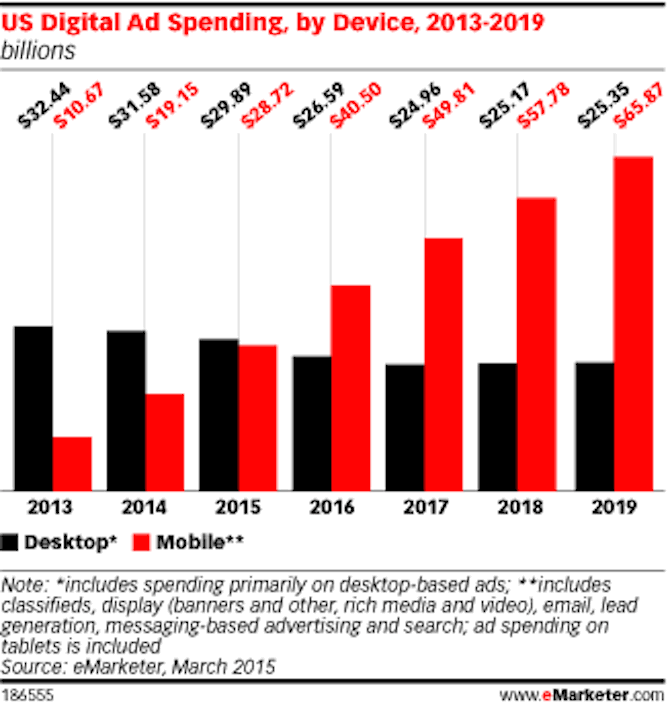
But what kind of ROI is there?
You just shouldn't put a huge chunk of your advertising budget into display ads just because.
Display ads have been around since the infancy of the Internet, and they're starting to show their age.
There are simply better ways to advertise to people.
For example, native advertising has become more popular lately, and it offers some benefits that regular display advertising doesn't provide.

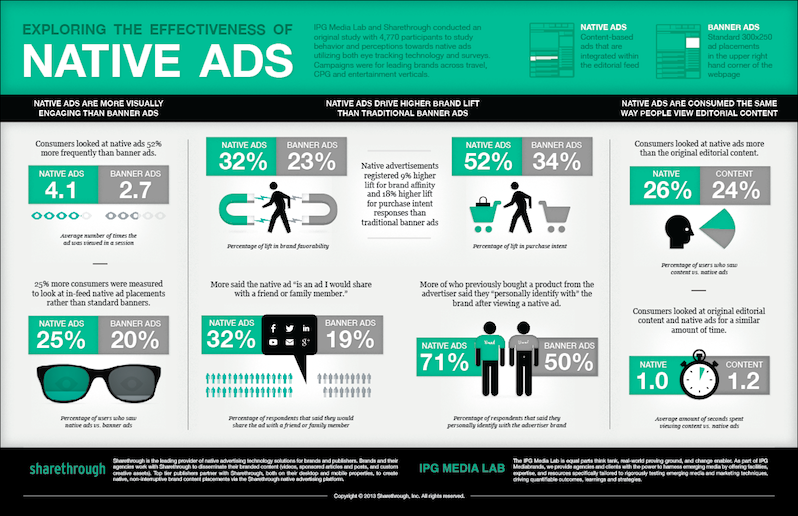
Like I said, display ads can work if you use them right.

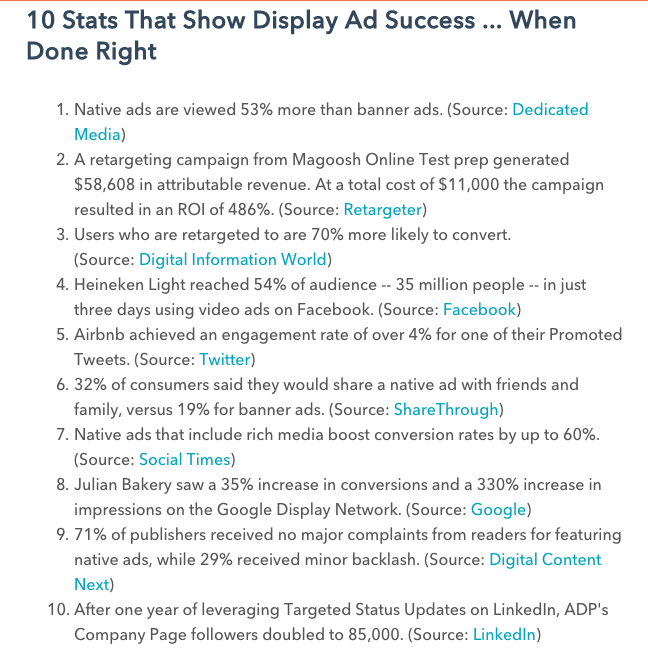
You have to use some techniques like retargeting, but display ads can actually give you some impressive results.
But if you dump all of your cash into it, you'll most likely get a super low ROI.
You'd be amazed at how many businesses still spend millions on display ads. Don't be one of those businesses.
Explore the different kinds of ads, and see what each kind can do for you.
5. Pointless market researchI'm all for getting to know your audience better. I shout it from the rooftops every chance I get.
And good market research helps you do just that.

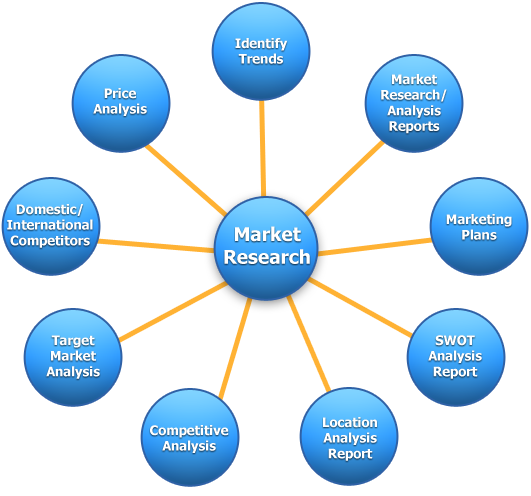
There are lots of good reasons to use market research. Maybe you're creating a new product or want to find out how much market share you really have.

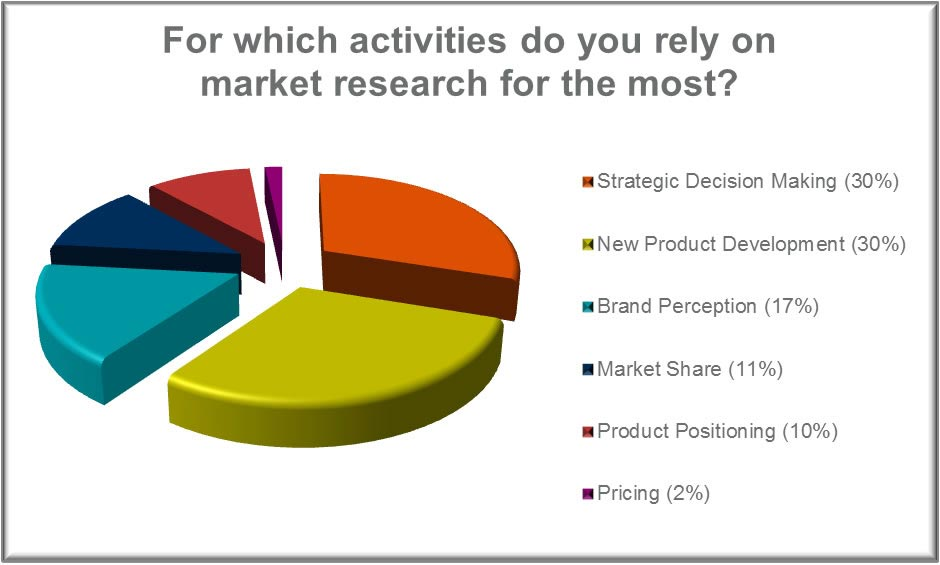
But not all market research tactics are created equal.
There are some forms of research that are actually beneficial and help you understand your audience or the market better.
Some other forms are just a waste of money.
Think about focus groups. These might seem like a good way to get feedback from your target audience, but they really only tell you what a small group of people think.
The same thing can happen with a tactic like user interviews or surveys. You might be reimbursing participants with cash or a gift card, but that might skew the participants' answers.
If you want your market research to be effective, it has to be objective and data-driven.
Think about government-conducted polls like Pew Research polls.

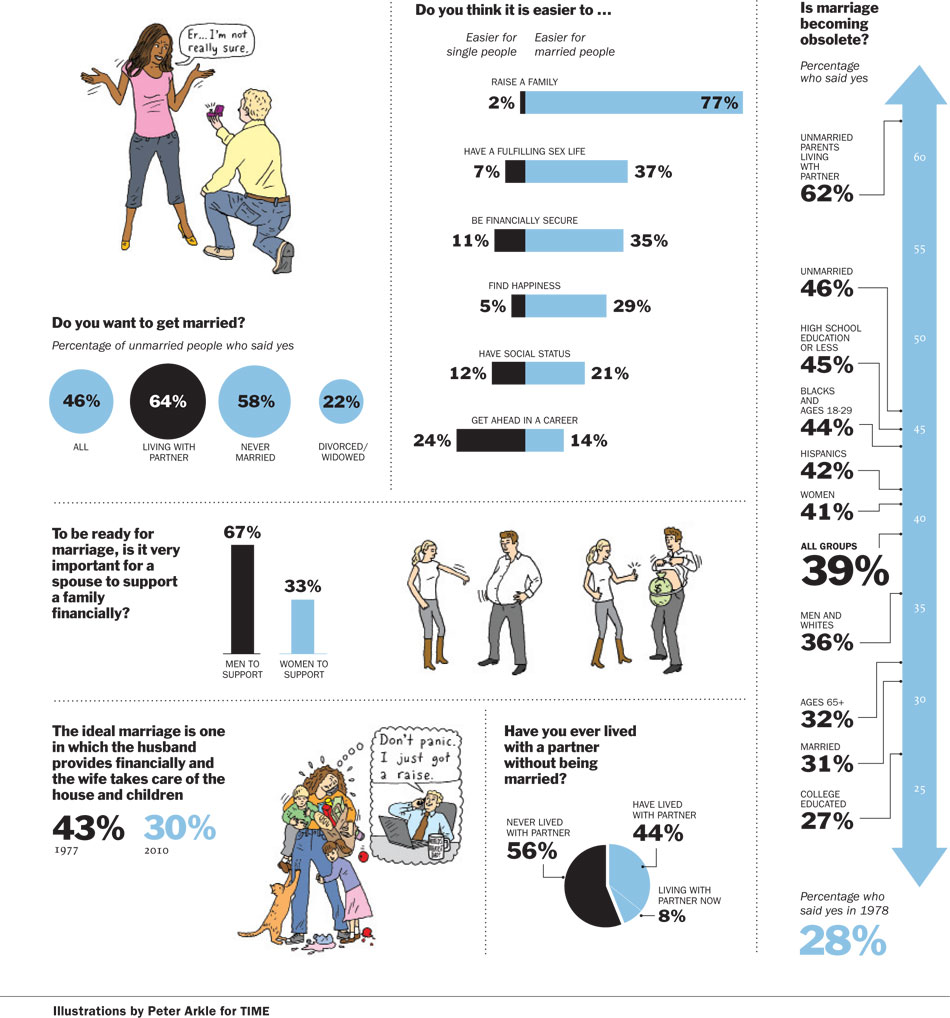
These polls reach a huge audience and don't have a specific agenda. The participants aren't biased, and there's a wide range of opinion that's represented.
And they can surprisingly give you some good insights.
There's a lot of demographic and psychographic data that you can use to improve your business, prepare for a launch, or even design a new product.
If you do your own research, it needs to be conducted on a large audience. The bigger, the better.
It also needs to be free from bias. You don't want your participants to be influenced by anything other than their own real opinions.
6. Hiring bad marketing consultantsRemember when I told you that marketing firms took all my money?
I'm not the only one who's had that experience. I talk with thousands of people every year who got ripped off by shady marketing consultants.
Some people think that they can call themselves a marketing consultant, give a few words of advice, and charge thousands of dollars for it.


That's not what a good marketing consultant does, and those people are not marketing consultants.
A good marketing consultant will communicate effectively with you. He or she will lay out detailed ideas in an easy-to-understand way and create a plan customized for your business.
So how can you tell if your consultant is bad or not?
First, a consultant should never promise you everything. He or she should have realistic expectations of what your business can achieve.
Second, your consultant should have a proven track record. You want to look at specific numbers and detailed case studies.
If your consultant isn't sharing that information, he or she may be hiding something.

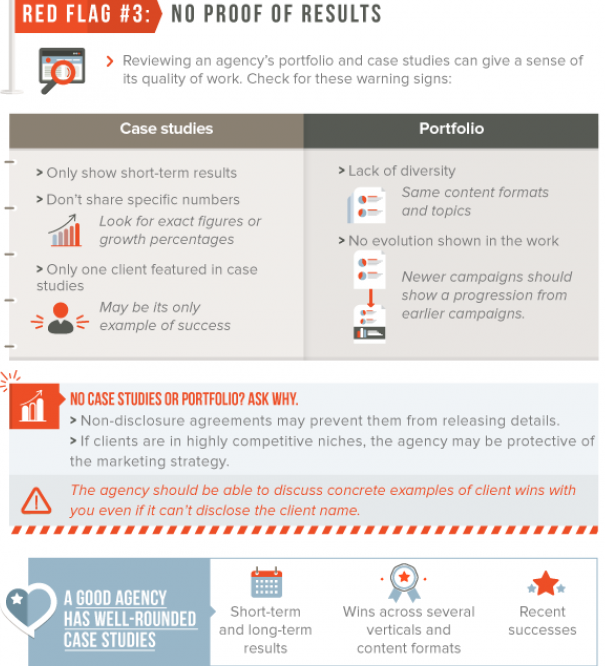
Whether you work with a solo consultant or an agency, you should expect sky-high levels of quality, communication, and results.
You can also check out online reviews if any are available. It's also important for a consultant or agency to have a good web presence, so check out their site and social media profiles as well.
ConclusionI've wasted too much money in my lifetime because I didn't know any better.
I've seen the same thing happen to friends, colleagues, and family members.
I don't want it to happen to you. It's super easy to prevent, and it gives you much better results.
I definitely think you should spend money if it makes sense. I've spent millions on business services that will help me grow my businesses.
At the same time, you should be careful about what you spend your money on, especially when it comes to marketing.
There are lots of ways to throw away money with marketing. Some of these tactics I've covered seem like they're good at first, but they don't amount to anything.
If you're using any of these tactics, I recommend getting out now.
It's better for your business. You'll save money now and see the results a little later.
What marketing tactics have you wasted money on?
Source: Stop Wasting Your Startup's Money on These 6 Marketing Tactics
No comments:
Post a Comment